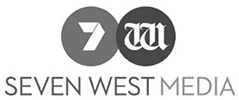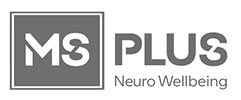
The Thinking Behind Candidate Care
A well-cared-for candidate is more inclined to speak positively about their experience with your organisation as an ‘employer of choice’. Talented candidates are actively seeking out organisations that prioritise the quality of the candidate’s recruitment experience. This is especially true of applicants from underrepresented groups. For those hiring, the opportunity to prioritise candidate care helps reduce challenges of building a richly diverse and competitive talent pool.
Integral elements of a sound candidate care strategy include a streamlined application experience and effective and timely communication. In this series we will discuss all elements of a comprehensive Candidate Care strategy, beginning with the first step: crafting a well-thought-out, truly inclusive job ad that speaks to the individual.
Crafting Person-Centred Job Ads
Effective candidate care starts with the very first touchpoint in the recruitment process: the job advertisement. How a company crafts, presents, and communicates job opportunities sets the tone for the candidate experience throughout the recruitment experience. It can be as simple as reducing anxiety with the right amount of information, to avoid triggers with careful handling of potentially sensitive topics within the job ad.
Job ads are how potential candidates are invited to engage with organisations and they send a strong message about the company’s commitment to equity and respect.
Writing a person-centred job ad means communicating that candidates are valued as real people, not just resources to be managed. If you’re an HR professional this begins with shifting the focus from what you want to showcase, to what the candidate needs to know and wants to learn about your organisation and the opportunity. It means using inclusive language, and very clearly setting out what the candidate can expect from the recruitment process as well as from the role being advertised.
Use Inclusive Language
- No gendered terms
- No jargon or references that might alienate people
- Be authentic in welcoming candidates from all backgrounds
Rethink Skill Requirements
- Focus on the core skills required to perform well in the role
- Explain how candidates will actually impact the company and why the role is important
- Where possible, avoid restrictive requirements (such as insisting on years of experience or specific degrees) that might discourage people from applying
- Emphasise that you’re looking for potential and passion, not just ticking boxes
Be Transparent and Specific
- Build trust by providing clear information on the steps of the recruitment process, role responsibilities and management dynamic
- Include details of benefits and work-life balance policies
Use Keywords To Authentically Communicate Company Values and Culture
- Share your organisation’s values, mission, and DEI initiatives
- Summarise how your company supports equal opportunity employment, employee wellbeing and professional development
Write For The Individual
- Address candidates directly by writing with a friendly, approachable tone that makes the candidate feel as though they’re part of the conversation
- Set the scene so they can visualise themselves in the role
Should Salary Be Included On A Job Ad?
The short answer is yes.
The longer answer is that if the goal of your candidate care strategy is to provide candidates with everything they need to make informed decisions at every step of a streamlined application process, salary transparency is non-negotiable. It’s a move that demonstrates transparency, fairness, and respect for the candidate’s time and expectations and shows that the company values openness and is not trying to withhold critical information until later in the process.
Transparency about pay also signals to candidates that your organisation has a fair and structured compensation system, a key component of a strong employer brand grounded in a contemporary diversity, equity and inclusion (DEI) strategy.

Women and minority candidates often face systemic pay gaps and are less likely to negotiate salaries. A salary band helps level the playing field and ensures fair compensation while helping to reduces pay inequity and mitigates pay disparities based on gender, race, or other biases.
Offering upfront salary information impacts candidate care by not frustrating candidates with lengthy recruitment processes only to be disappointed by the offer. It also creates an environment where all candidates, regardless of their background, feel confident they will be paid fairly and equally for their work.
A Checklist Of Key Components For An Inclusive, Accessible Job Ad
- Hosting on a platform that can convert text to speech
- A gender-neutral job title
- A salary band
- Location and address of place of work
- Clear flexible workplace opportunities outlining work from home and on-site requirements
- An introduction to your organisation’s mission, vision and values
- Images with image descriptions
- Video, if possible, with closed captions
- A listing of relevant soft skills
- A timeline of the recruitment process
- A commitment to circle back in a timely manner
- A DEI statement welcoming applications from mature age people and people from diverse backgrounds
- Encouragement for First Nations and Torres Strait Islander applicants
- A statement on your organisation’s commitment to equal opportunity employment (EOO)
- An invitation for people of all abilities to apply with language that makes it clear this is more than a token statement and an offer to make adjustments throughout the recruitment process for any candidates who may need it.
If the goal is to craft a person-centred job that makes a statement about being committed to prioritising inclusion and candidate care, consider the impact of elevating these last three points from their typical placement at the end of a job ad to feature at the opening.
Furthermore, suppose your interest in candidate care extends beyond crafting inclusive job ads to developing a comprehensive and cohesive candidate care strategy. In that case, Corporate Diversity Pathways can support your hiring team with customised solutions for strategic DEI-led initiatives and executive search to create a more inclusive, effective, and responsive recruitment process.
Ready to create a workplace where everyone thrives?
Our evidence-based solutions are designed to transform your company culture, enhance team collaboration, and drive sustainable success.
Take the first step towards a more inclusive future. Connect with us today!
















